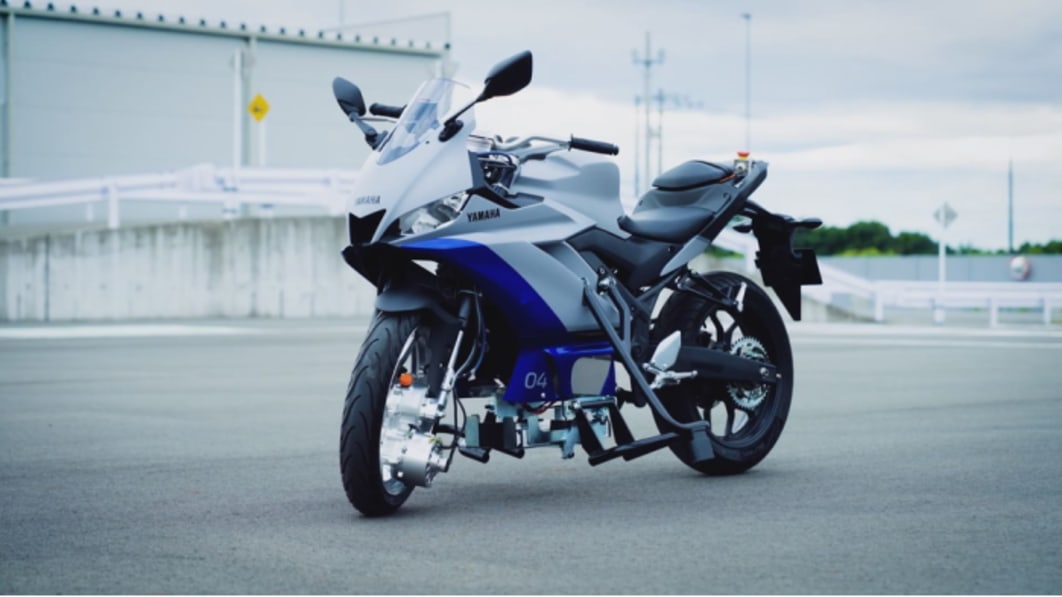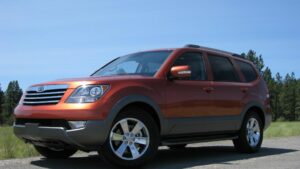
Yamaha has unveiled a prototype motorcycle with balancing technology that should help reduce the number of bike accidents. With the somewhat clunky name of Advanced Motorcycle Stabilization Assist System (AMSAS), the system can be applied to existing motorcycle designs without modification to the frame or major components.
Yamaha engineers have put AMSAS on a YZF-R25, which is powered by a 250cc DOHC inline-twin with an offset cylinder design. Where it differs from a production model is in its 6-axis Inertial Measurement Unit (IMU) that work in conjunction with drive and steering actuators.
“When starting or stopping, the drive actuator fitted to the front wheel aids with stability, and from there up to about 3 mph, the steering actuator attached to the handlebars takes over,” explained Project Leader Akitoshi Suzuki. As a result, the bike “can move at walking speeds without falling over, regardless of the skill level of the rider.”
.embed-container { position: relative; padding-bottom: 56.25%; height: 0; overflow: hidden; max-width: 100%; } .embed-container iframe, .embed-container object, .embed-container embed { position: absolute; top: 0; left: 0; width: 100%; height: 100%; }
A motor on the front wheel lets the bike stay upright even when at a standstill. Yamaha describes the system as “using the dynamics of an inverted pendulum, like balancing a broom upside down in your palm.” Additional actuators on the handlebars provide minute steering inputs, similar to “standing still on a bicycle without pedaling.” When used in unison, you get AMSAS.
The technology was developed from past Yamaha concepts such as 2015’s Motobot and 2017’s MOTOROiD. The former was an autonomous motorcycle-riding robot and the latter a prototype motorcycle fitted with AI and self-balancing technology. “The R&D for AMSAS began with the idea of bringing the technologies and know-how acquired through developing these two models,” says Suzuki.
Yamaha has set for itself a lofty goal of eliminating fatal motorcycle accidents by 2050. The company is planning further technologies to predict obstacles and assist in defensive or evasive riding maneuvers.
According to Suzuki, AMSAS is still only halfway there. The next steps are to miniaturize the components before production. Yamaha also has plans to develop AMSAS for not just motorcycles, but other types of vehicles as well, such as bicycles.
- SEO Powered Content & PR Distribution. Get Amplified Today.
- Platoblockchain. Web3 Metaverse Intelligence. Knowledge Amplified. Access Here.
- Source: https://www.autoblog.com/2023/03/30/yamaha-low-speed-motorcycle-stabilization-technology/
- :is
- $UP
- 1
- 2017
- a
- About
- Absolute
- accidents
- acquired
- Additional
- advanced
- AI
- aids
- and
- applied
- ARE
- AS
- assist
- At
- autonomous
- BE
- before
- began
- bicycles
- Bringing
- by
- CAN
- company
- components
- concepts
- defensive
- Design
- designs
- develop
- developed
- developing
- develops
- down
- drive
- dynamics
- eliminating
- Engineers
- Ether (ETH)
- Even
- existing
- explained
- Falling
- For
- Former
- FRAME
- from
- front
- further
- get
- goal
- Have
- height
- help
- Hidden
- HTTPS
- idea
- in
- IT
- ITS
- itself
- leader
- Lets
- Level
- like
- lofty
- major
- max-width
- minute
- model
- models
- Motor
- motorcycle
- motorcycles
- move
- name
- next
- number
- object
- obstacles
- of
- offset
- on
- Other
- palm
- past
- planning
- plans
- plato
- Plato Data Intelligence
- PlatoData
- PoS
- position
- powered
- predict
- Production
- project
- prototype
- provide
- put
- R&D
- reduce
- Regardless
- result
- riding
- s
- says
- SEC
- set
- should
- similar
- skill
- somewhat
- speeds
- Stability
- Starting
- stay
- Steps
- Still
- stopping
- such
- system
- takes
- tech
- Technologies
- Technology
- that
- The
- There.
- These
- Through
- to
- top
- types
- unit
- unveiled
- Upright
- Upside
- Vehicles
- walking
- WELL
- Wheel
- which
- with
- without
- Work
- Your
- zephyrnet











